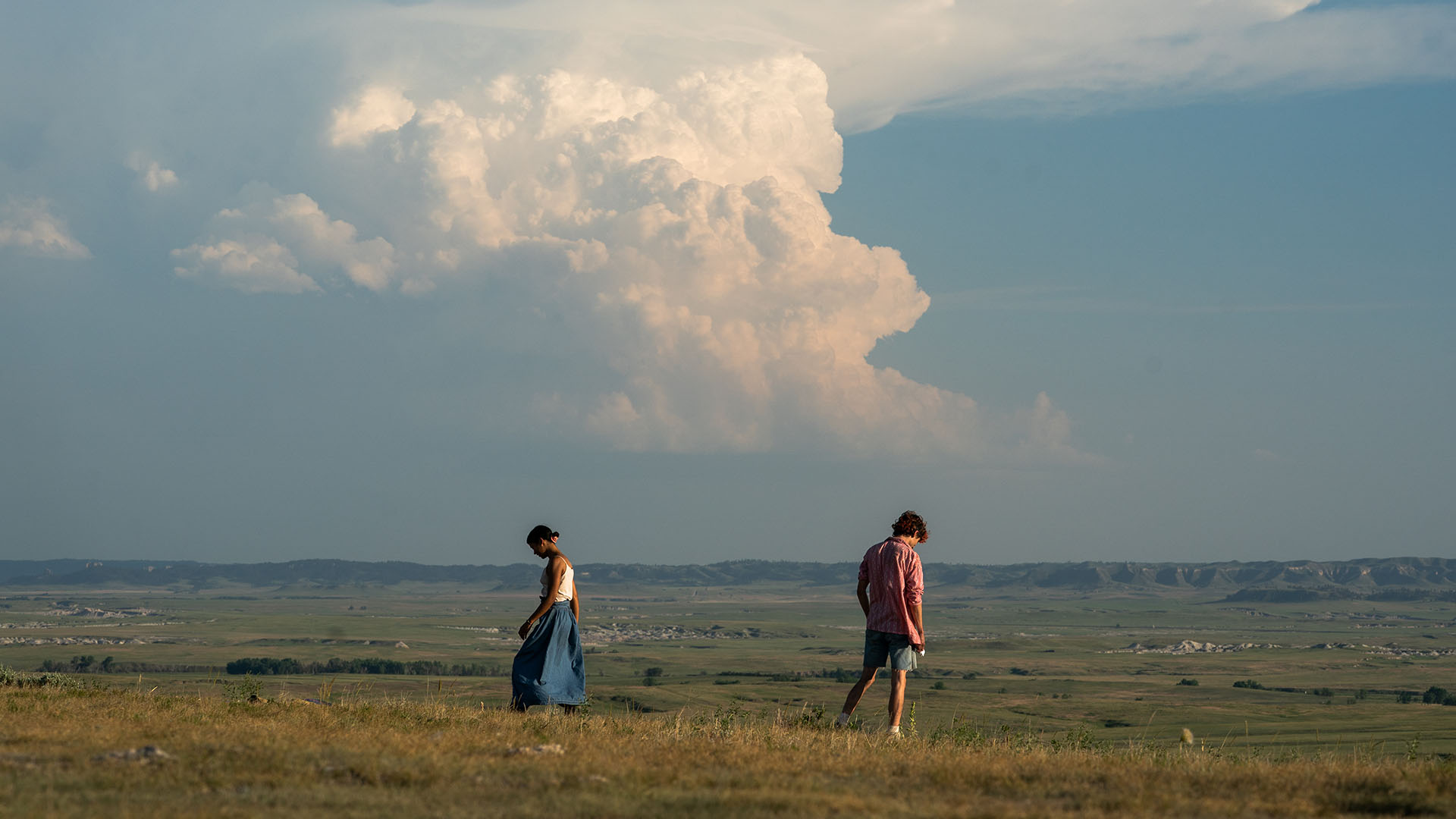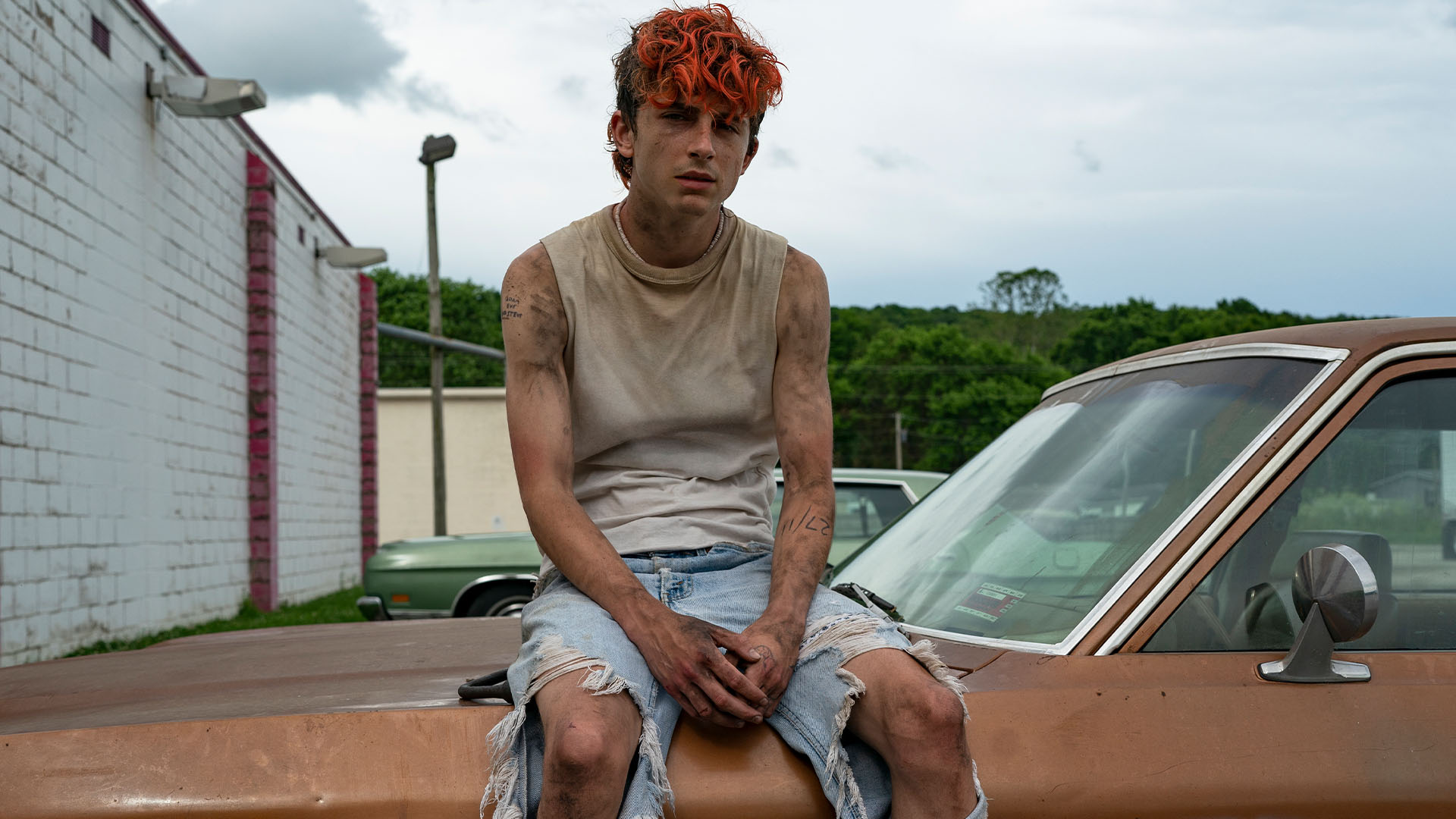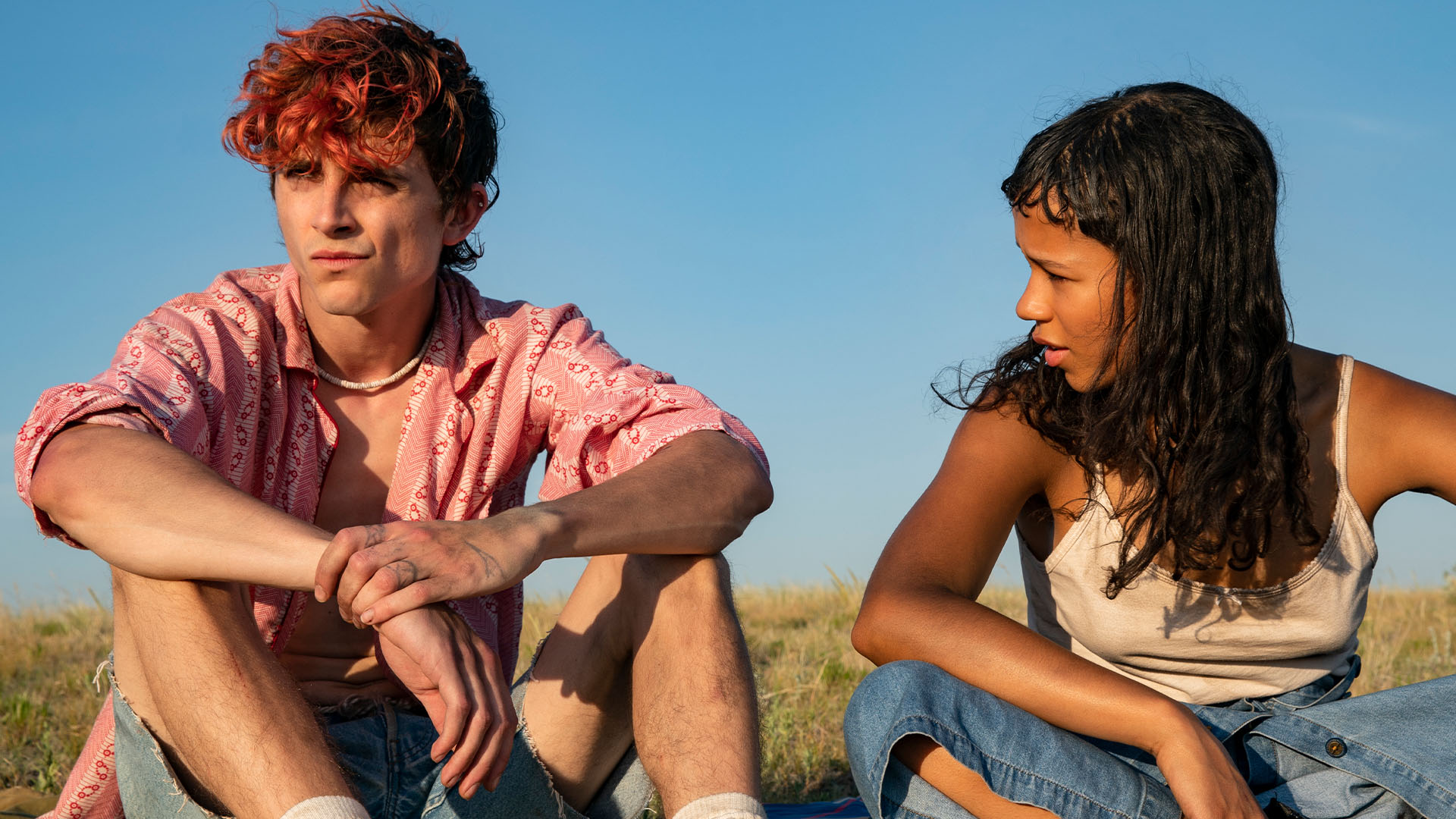Teen alienation, violence and sexual awakening: Bones and All reveals modern Doom Generation

Taylor Russell stars opposite Timothée Chalamet in this horror-romance road movie by Call Me by Your Name director Luca Guadagnino. It’s an artful clash of gory, blood-soaked ferocity and tender teenage love story, says Cat Woods.
All the perfect elements add up to more than the sum of their parts in ghoulish love story Bones and All. It was a no-brainer, a fait accompli, for Italian director Luca Guadagnino to partner with American lead actor Timothée Chalamet following their chemistry in 2017’s heartbreaking, gorgeously melancholic Call Me by Your Name.
In its artful clash of gory, blood-soaked ferocity and the tenderness of a teenage love story, Bones and All is an allegory of addiction that is restless with hunger, desire and existential horror.
As unlikely as it might seem, it bears plenty in common with Call Me by Your Name. Bones and All reveals Chalamet’s Lee, a vulnerable, horny, alienated American teenage boy with a secret that would cause the world to prey on him. He falls in love with Maren (Taylor Russell) who has departed her father’s home in search of her mother. The skeletons in her closet rattle with shame, whereas Lee barely restrains his own furious grief, and both are united in that addictive, all-encompassing way that only outsiders can appreciate. It is a unity of awe for two people who assumed love and partnership were not in their fate.
Both movies are set in the 1980s, and both are based on critically lauded novels (Call Me by Your Name by André Aciman; Bones and All by Camille DeAngelis). Each is bathed in the beauty of landscape, the clash of rural and urban shapes and colours and the lustre of youth. The soundtracks to both are intuitively and instinctively syncopated to the moods of characters and scenery.

In Bones and All, the landscape is the sparse, rural American Midwest. Veteran horror screenwriter David Kajganich was born in Ohio, and his innate appreciation for the place and people results in an effortless flow of quiet melodrama stabbed through with gobsmacking horror on regular occasions. He was also responsible for Guadagnino’s 2018 adaptation of Dario Argento horror opus Suspiria. Kajganich, like many of Guadagnino’s talented crew, has worked across his diverse films to date.
Giulia Piersanti—who also worked on Suspiria and Call Me by Your Name—is the invisible aesthetic magician at work here. She envisioned Chalamet’s Lee as a reedy, grungy, feline creature with ratty pinky-red, half-shaved hair, torn jeans, and stained shirts that show off his bony torso, while Maren’s casual, feminine outfits are loosely fitting cover-ups shielding her body and her secrets.
Though they are new to Guadagnino, Trent Reznor and Atticus Ross have long held the mantle of film soundtrack geniuses (including Bird Box, Mank and The Social Network). Here, they have curated an eerily divine score that crackles underneath the fragile existence of its protagonists and their traumatised landscape. Joy Division’s nihilistic, throbbing Atmosphere is perfect when it makes its entrance.

Chalamet’s Lee is catastrophically alluring. He is a lost, rebellious, surreally beautiful boy in the likeness of Kurt Cobain or Lee’s doppelganger, a young Syd Barrett. With his impish smile, lithe limbs, fierce quietness, and the mathematically perfect angles of his face, he is undoubtedly the show stealer of Bones and All. Even splattered in blood, he’s utterly magnificent to watch.
That blood is an uncredited character (“maraschino cherries, dark chocolate, and Fruit Roll-Ups” according to Russell) and it is not for the faint-hearted. That said, this is not a horror film in the traditional sense and as someone who still has nightmares from A Nightmare on Elm Street, Halloween and The Exorcist, this reviewer can attest that Bones and All should not be avoided purely because you’re gore-averse.
Canadian actress Taylor Russell deservedly won the Marcello Mastroianni Award at the Venice Film Festival this year, recognising her as an emerging talent. She is captivating. She moves, at first, like a cat that has been starved and attacked, with her head down and her body drawn inward. As Lee falls in love with her, she physically unfurls from a damaged girl into an agile, leonine woman. Whereas Kristen Stewart mastered 50 Shades of Smirking Sadness in the Twilight movies, Russell’s demeanour is nuanced across a continuum of grace, terror, desire and curiosity.

Bones and All is unashamedly erotic. It is searing in its suggestiveness, every inch of the screen electrified with lust when Lee and Maren are present. In this sense, and many others, it owes a spiritual legacy to another film, The Doom Generation directed by Gregg Araki—an apocalyptic love story of alienated teenagers in a barren, cruel world (that kicks off with a Nine Inch Nails track as an opener, of course).
The teenage couple at the heart of The Doom Generation, Amy Blue (Rose McGowan) and Jordan White (James Duval – who Flicks talked to about the upcoming Sundance celebration of an uncensored version of The Doom Generation), have prepared to escape their negligent parents. They leave a trail of disaster that they only discover via relentless TV news announcing gory details of their last stopover. Their greasy meals and fuel always add up to $6.66. Every ludicrously garish character they meet appears to already know Amy Blue, and to have reason to seek revenge upon her.
Both Blue and Maren represent the paradox of womanhood: “you can be beautiful, but you’ll have to be subject to fantasies and men’s urgent need to control you. You can be clever, but men will prove they’re smarter. You can be free, but only to the degree that it doesn’t make men uncomfortable.”
The violence in The Doom Generation is on a grand, theatrical scale. Blood bursts from severed limbs, greasy burgers are bright yellow, lipstick is vampire red. Everything is high camp, extreme kitsch.
While Bones and All wisely avoids Araki’s garish aesthetic, both movies slide across the genre borders of road trip, coming-of-age, horror tropes while being agile enough to maintain the human connection. In a way, the horror and road trip combo is an ideal approach to teenage alienation. It blows up all those hormonal, societal fears that we are totally alone, and very strange and on this bizarre, unending trip that can feel immensely lonely without at least one other who gets us.
It will haunt you (and me) long after the final credits.




















